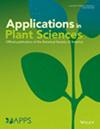Improving computer vision for plant pathology through advanced training techniques
Abstract
Premise
This study investigates advanced training techniques to improve the performance of convolutional neural networks for disease detection in cocoa, Theobroma cacao.
Methods
Despite recent stagnation in accuracy improvements in computer vision for image classification, our research demonstrates significant advancements in performance through semi-supervised learning, specialised loss functions, and the inclusion of a non-cocoa class.
Results
Semi-supervised learning reduced overfitting and enhanced generalisability, particularly for subtle symptoms. The non-cocoa class exposed models to a broad range of relevant features, significantly improving model robustness and performance in difficult cases. Grad-CAM for qualitative assessment provided valuable insights into model behaviour, highlighting cases of overfitting missed by summary statistics. We also describe dynamic focal loss, a novel loss function that uses an empirical measure of difficulty to weight each image. Our results suggest that while PhytNet shows promise in terms of computational efficiency and superior handling of difficult images, ResNet18 with semi-supervised learning and dynamic focal loss emerged as the strongest contender for real-world deployment.
Discussion
This research underscores the potential of semi-supervised learning and advanced loss functions in enhancing the applicability of deep learning models in agricultural disease management. It also presents a new high-quality benchmark dataset of 7220 images of diseased and healthy cocoa trees, offering a much greater and more realistic challenge than the Plan Village dataset.




 求助内容:
求助内容: 应助结果提醒方式:
应助结果提醒方式:


